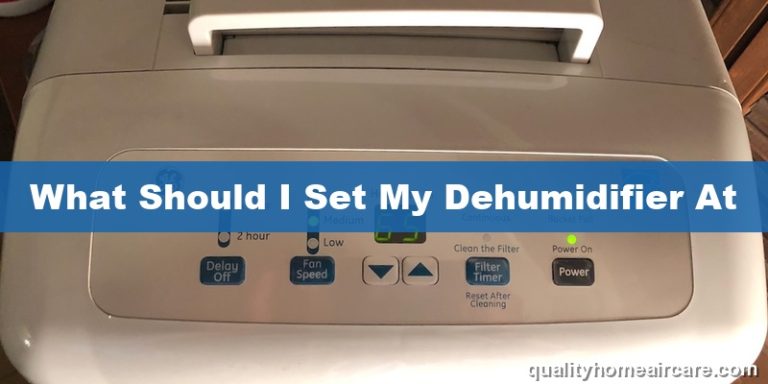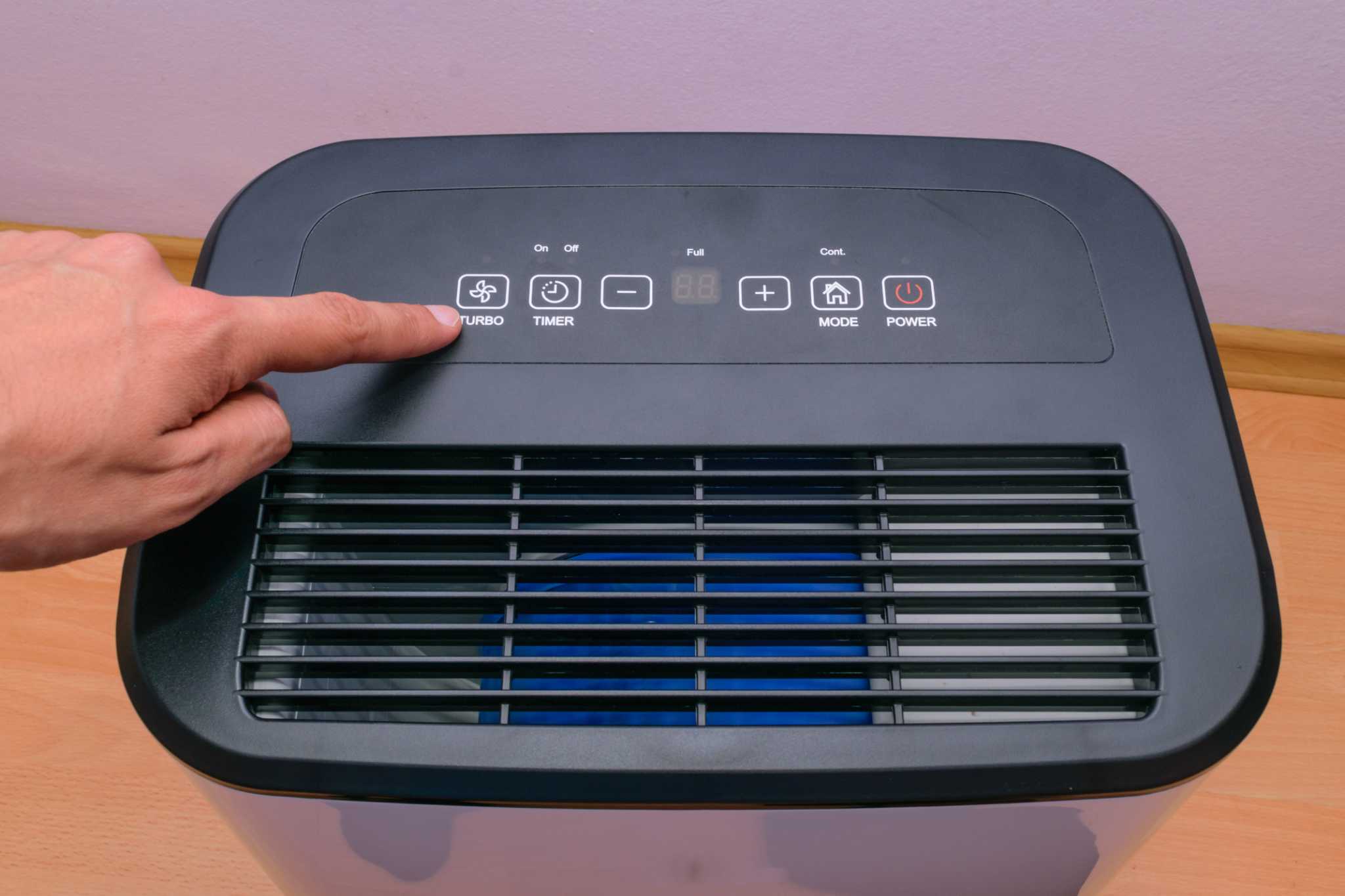What Should You Set Your Dehumidifier At

Frequently Asked Questions: Setting Your Dehumidifier for Optimal Performance
Understanding how to properly set your dehumidifier is crucial for maintaining a healthy and comfortable indoor environment. This FAQ addresses the most common questions about setting your dehumidifier for optimal performance.
Q1: What humidity level should I aim for in my home?
The generally recommended humidity level for most homes falls between 30% and 50% relative humidity (RH). This range helps prevent mold growth, dust mite infestations, and other moisture-related problems, while also ensuring comfortable living conditions. Aiming for the lower end of the range, around 30-40%, is often preferred, especially during humid seasons.
Q2: How do I know what the current humidity level is in my home?
You'll need a device called a hygrometer to measure the relative humidity. These are readily available at most hardware stores or online. They come in various forms, from simple analog models to more sophisticated digital versions. Some smart thermostats also include built-in hygrometers. Place the hygrometer in a central location, away from direct sunlight or drafts, to get an accurate reading. Monitoring multiple locations in your home, especially basements or bathrooms, can provide a more complete picture of your humidity levels.
Q3: What setting should I use on my dehumidifier, and how do I adjust it?
Most dehumidifiers have an adjustable humidistat, which allows you to set your desired humidity level. Here's how to approach setting it:
- Initial Setup: Start by setting the dehumidifier to a comfortable level, typically around 50% RH.
- Monitor and Adjust: Use your hygrometer to monitor the humidity level over the next few days. If the humidity remains above 50%, lower the setting on the dehumidifier by 5% (e.g., to 45%). If the humidity drops too low (below 30%), raise the setting by 5%.
- Experiment: Finding the optimal setting might require some experimentation. The ideal setting will depend on factors such as the size of your space, the local climate, and your personal preferences.
- Consider Auto Mode: Some dehumidifiers have an "auto" mode, which automatically adjusts the fan speed and dehumidification level to maintain your desired humidity setting. This can be a convenient option once you've determined your preferred humidity level.
- Continuous Mode: For extremely damp environments or during periods of high humidity, you may need to use the "continuous" mode, which runs the dehumidifier constantly regardless of the humidity level. However, be mindful of energy consumption when using this mode.
Remember to check the dehumidifier's water tank regularly and empty it as needed. Some models can be connected to a drain hose for continuous drainage, which eliminates the need for manual emptying.
Q4: What factors influence the ideal dehumidifier setting?
Several factors can influence the ideal dehumidifier setting for your home:
- Climate: Humid climates generally require lower dehumidifier settings to maintain a comfortable humidity level.
- Season: Humidity levels tend to be higher during the summer months, so you may need to adjust your dehumidifier setting accordingly. Winter months may require less dehumidification, particularly if heating systems dry the air.
- Location in the Home: Basements and bathrooms are often more humid than other areas of the house and may require lower settings.
- Size of the Room/Area: Larger rooms typically require a dehumidifier with a higher capacity and potentially a lower humidity setting to effectively remove moisture.
- Personal Preferences: Some people are more sensitive to humidity than others, so the ideal setting may depend on your individual comfort level.
- Number of Occupants: More people in a home contribute to humidity through breathing, showering, and cooking, potentially requiring a lower setting.
- Activities: Activities like showering, cooking, and laundry can significantly increase humidity levels.
- Presence of Moisture Sources: Leaks, poor ventilation, or damp foundations can all contribute to higher humidity levels and necessitate more aggressive dehumidification.
Q5: What happens if I set my dehumidifier too high or too low?
Setting your dehumidifier at the wrong level can lead to several issues:
- Setting it too high (e.g., 60% RH or higher): This can result in:
- Mold and Mildew Growth: High humidity provides a breeding ground for mold and mildew, which can damage your property and pose health risks.
- Dust Mite Infestations: Dust mites thrive in humid environments, exacerbating allergies and asthma.
- Uncomfortable Living Conditions: High humidity can make your home feel stuffy and uncomfortable.
- Wood Rot: Excess moisture can damage wooden structures and furniture.
- Setting it too low (e.g., below 30% RH): This can result in:
- Dry Skin and Irritated Airways: Low humidity can dry out your skin, leading to itching and discomfort. It can also irritate your nasal passages and throat.
- Static Electricity: Low humidity increases static electricity, which can be annoying and potentially damage sensitive electronics.
- Damage to Wood Furniture: Excessively dry air can cause wood furniture to crack and warp.
- Increased Energy Consumption: Running a dehumidifier at a very low setting can waste energy and increase your electricity bill.
Therefore, finding the right balance is essential. Regularly monitor the humidity levels in your home and adjust the dehumidifier setting accordingly to maintain a comfortable and healthy environment.
Q6: Are there any warning signs that my humidity level is too high, even if my hygrometer seems okay?
Even with a hygrometer reading, certain signs indicate your humidity might be too high, prompting a closer look. These include:
- Visible Condensation: Condensation on windows, mirrors, or walls is a clear sign of excessive moisture.
- Musty Odors: A musty smell indicates the presence of mold or mildew.
- Water Stains: Water stains on walls or ceilings can indicate leaks or excessive condensation.
- Warped Wood: Warped wood floors, door frames, or furniture suggests high humidity.
- Peeling Paint or Wallpaper: Peeling paint or wallpaper can be caused by moisture buildup behind the surface.
- Allergy or Asthma Symptoms: Increased allergy or asthma symptoms can be triggered by mold, mildew, or dust mites thriving in a humid environment.
- Feeling of Dampness: A general feeling of dampness in the air, even if the temperature is comfortable.
If you notice any of these signs, investigate further to identify the source of the moisture and adjust your dehumidifier settings accordingly. Consider checking for leaks, improving ventilation, and addressing any other underlying moisture problems.
Q7: Can I use my dehumidifier in conjunction with my air conditioner?
Yes, you can absolutely use your dehumidifier and air conditioner together, and in many cases, it's actually beneficial. Here’s why:
- Complementary Functions: Air conditioners primarily cool the air, while dehumidifiers primarily remove moisture. Although air conditioners do remove some moisture as part of the cooling process, they aren't as efficient at dehumidification as dedicated dehumidifiers.
- Enhanced Comfort: Using both can create a more comfortable indoor environment. The air conditioner lowers the temperature, while the dehumidifier reduces humidity, preventing that sticky, clammy feeling often associated with hot weather.
- Energy Savings: By removing excess moisture, the dehumidifier can make your air conditioner more efficient. A drier air mass is easier to cool, so your air conditioner won't have to work as hard to reach your desired temperature, potentially saving energy. However, running both simultaneously will consume more energy than running only one. So monitor usage and energy consumption.
- Preventing Overcooling: Sometimes, people lower their air conditioner temperature excessively to combat humidity, which can lead to overcooling and discomfort. Using a dehumidifier allows you to maintain a comfortable temperature without having to lower the thermostat too much.
However, it's important to avoid creating an excessively dry environment. Monitor the humidity level with your hygrometer and adjust the settings of both your dehumidifier and air conditioner as needed. Ideally, aim for a humidity level between 30% and 50%.










